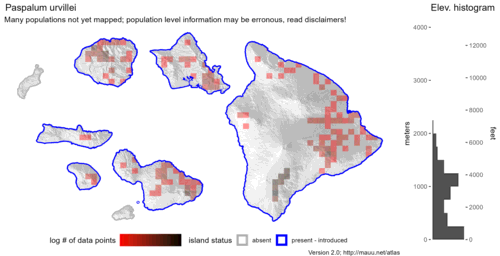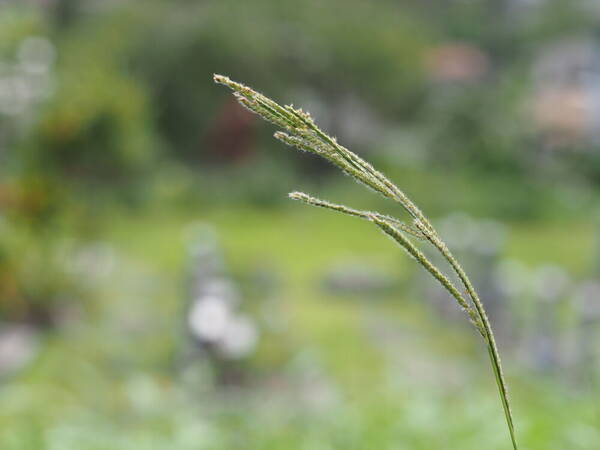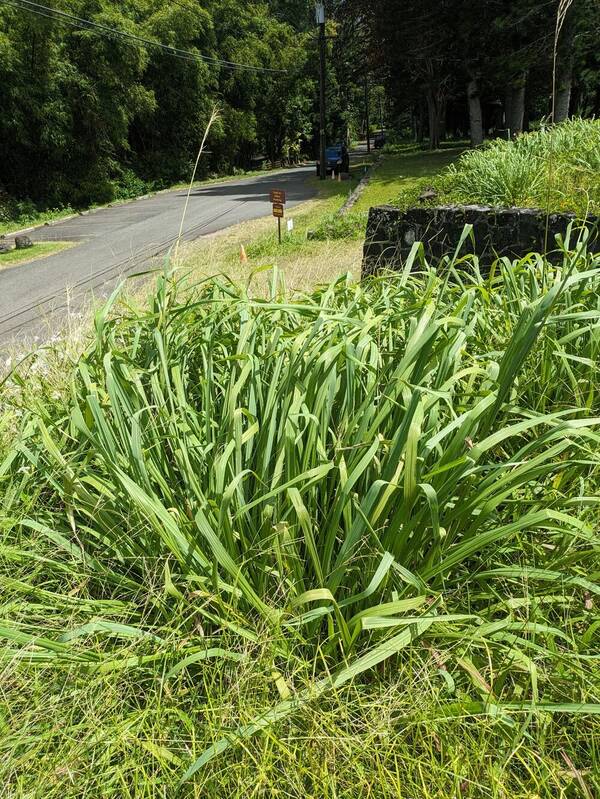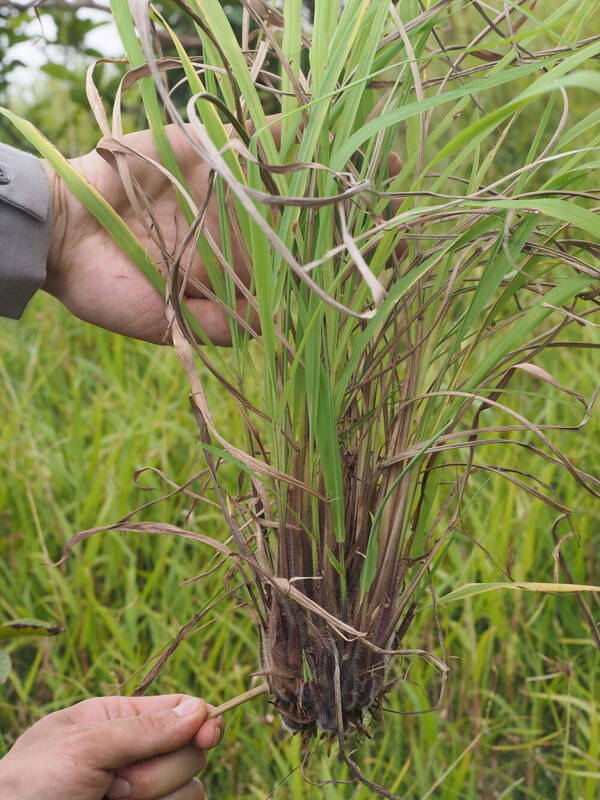Info
Subfamily: Panicoideae
Genus etymology: Paspalum = "millet" [Greek] some species are used as cereals
Species etymology: urvillei = honorific for Jules Sébastien César Dumort d’Urville (1790–1842)
Photosynthetic type: C4 (warm season)
Nativity: naturalized - intentional
First recorded in Hawaiʻi: 1913
Map


Inflorescence











Plant



Habit

Spikelets



Culm base

Description
Plants perennial; cespitose, with a knotty base composed of very short (less than 1 cm) rhizomes. Culms 50-220 cm, erect; nodes glabrous or pubescent. Sheaths glabrous or pubescent; ligules 1-4(7.7) mm; blades 12-60 cm long, 2-12 mm wide, flat, mostly glabrous, a few long hairs near the base of the adaxial surface. Panicles terminal, with (4)10-30 racemosely arranged branches; branches 1.2-11.5 cm, divergent; branch axes 0.5-1.1 mm wide, winged, glabrous, margins scabrous, terminating in a spikelet. Spikelets 1.8-2.8 mm long, 1.1-1.5 mm wide, paired, appressed to the branch axes, elliptic to slightly obovate, stramineous (rarely purple). Lower glumes absent; upper glumes and lower lemmas 3-veined, margins pilose; upper florets stramineous. Caryopses 1.2-1.7 mm, white. 2n = 40.
(Description source: Barkworth, M.E., Capels, K.M., Long, S. & Piep, M.B. (eds.) 2003. Flora of North America, north of Mexico. Volume 25. Magnoliophyta: Commelinidae (in part): Poaceae, Part 2. Oxford University Press, New York. 783 pp http://floranorthamerica.org/Paspalum_urvillei )
Perennials; culms tufted, stout, erect, 7- 25 dm tall, unbranched or branching from lower nodes, sometimes from the middle node, slightly compressed, glabrous, purplish toward base. Sheaths keeled and coarsely hirsute or glabrate toward summit, the basal sheaths loose, the cauline sheaths glabrous or sometimes ciliate on margins, sometimes weakly auricled; ligule triangular, 3-5 mm long; blades flat, ascending, relatively firm, usually (12-)20-30(-65) cm long, 3-20 mm wide, densely long-pilose at the very base, margins scabrous, slightly rounded at base or narrowed to the width of the sheath. Panicles erect, 10-42 cm long, peduncles angled, glabrous, racemes (6-)12-18(-25), ascending to © slightly drooping, 7-14 cm long, the rachis flat, narrowly winged, ca. 0.8 mm wide, with a few long hairs at base, margins scabrous, pedicels slender, flattened; spikelets paired, imbricate, ovate, depressed plano-convex, (2-)2.2-2.7(-3) mm long, 1.2-1.5 mm wide; first glume absent, second glume and first lemma equal, thin, 3-5-nerved, margins of both copiously pubescent with long silky white hairs, second glume sparsely appressed silky pubescent throughout; second lemma thick, cartilaginous, slightly convex, glabrous or nearly so at the middle, 3- nerved; palea flat to slightly convex, 2- nerved, similar to lemma. Caryopsis pale, elliptic, plano-convex, 1.8-2 mm long, nearly smooth. [2n = 40, 60.]
(Description source: O’Connor, P.J. 1990. Poaceae, pp. 1481–1604. In: Wagner W.L., Herbst D.R. & Sohmer S.H. (eds.)., Manual of the flowering plant of Hawaiʻi. Vol. 2. University of Hawaii Press & Bishop Museum Press, Honolulu )